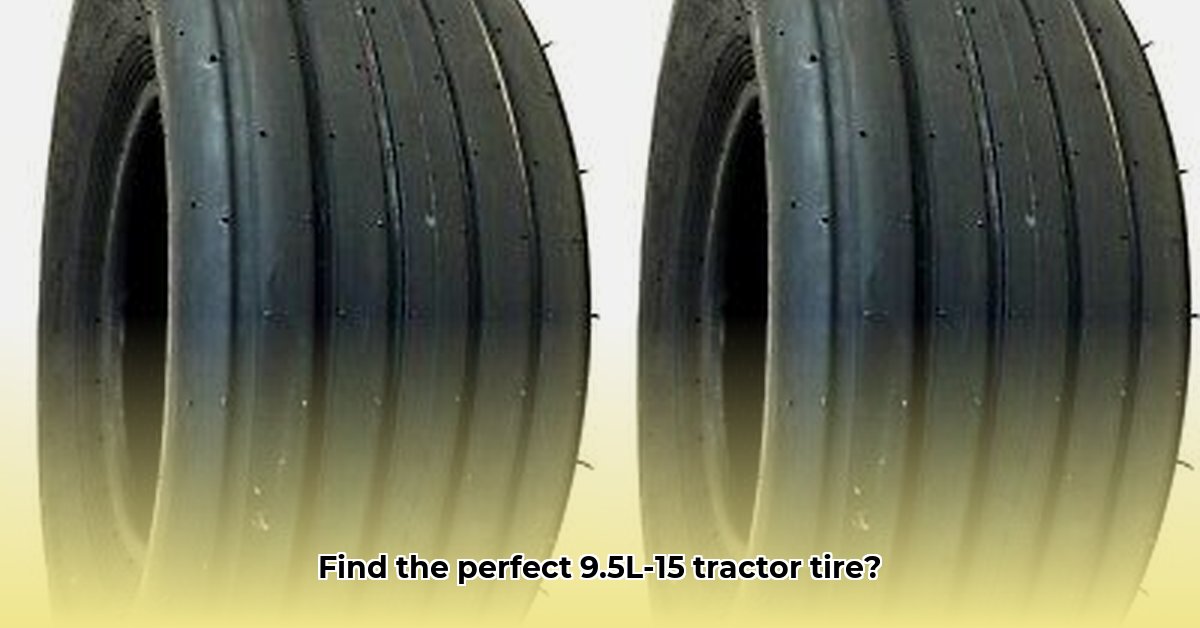
Choosing the right tractor tires is crucial for farm efficiency, profitability, and environmental sustainability. This guide focuses on Carlisle's 9.5L-15 tractor tires, comparing two key options – the Specialist and the Multi-Rib – to help you select the best fit for your operation. We’ll cover key features, soil suitability, maintenance, and discuss the importance of tire choice in sustainable agriculture. For more tire dimension info, see this helpful resource: tractor tire sizes.
Understanding Your Farming Needs
Before diving into tire specifics, consider your farm’s unique circumstances. What types of soil do you primarily work with? Heavy clay, sandy loam, or something in between? What are your typical farming tasks? Heavy tillage, light fieldwork, or predominantly transportation? Matching the right tire to your specific needs significantly impacts efficiency and longevity. Think of it like choosing the right tool for the job; a screwdriver isn't ideal for hammering nails.
Carlisle 9.5L-15 Tractor Tires: Specialist vs. Multi-Rib
Carlisle offers the Specialist and Multi-Rib tires in the 9.5L-15 size, each designed for different soil conditions and tasks. While both handle a similar load capacity (approximately 1500 lbs), their tread patterns are key differentiators.
| Feature | Carlisle Specialist | Carlisle Multi-Rib |
|---|---|---|
| Tread Pattern | Deep, aggressive lugs (provide maximum traction in muddy conditions) | Wider, shallower lugs (balance grip and smooth rolling) |
| Ideal Soil | Heavy clay, sticky mud, wet conditions | Wider range of soil types; performs well in various conditions |
| Typical Use | Heavy tillage, plowing, challenging terrain | General farm work, transport, lighter fieldwork |
| Estimated Lifespan | Variable; depends on usage and maintenance | Variable; depends on usage and maintenance |
| Puncture Resistance | Potentially higher (due to deep lugs) | Potentially moderate (shallower tread) |
Important Note: Precise lifespan and puncture resistance data are limited. Further independent testing is recommended for definitive conclusions. This lack of precise data highlights the need for more research in this area of agricultural technology.
Choosing the Right Tire: A Step-by-Step Guide
Selecting the ideal tire involves a simple, yet crucial, process:
Analyze Your Soil: Is your soil predominantly heavy clay, requiring maximum traction? Or is it lighter, allowing for a tire that prioritizes even wear?
Assess Your Tasks: Do you frequently tackle heavy tillage in challenging conditions? Or is your work primarily transportation and lighter fieldwork?
Consider Your Budget: While both tire types fall within a similar price range, the long-term cost (including lifespan and fuel efficiency) should be considered. A longer-lasting tire, while potentially more expensive upfront, can offer significant long-term savings.
Consult Your Dealer: Discuss your specific needs and soil conditions with your local tire dealer. Their expertise and local knowledge can prove invaluable.
Tire Maintenance for Enhanced Lifespan & Sustainability
Proper tire maintenance significantly extends their life and contributes to sustainable farming practices by reducing waste and minimizing soil compaction.
Regular Inflation Checks: Maintaining correct inflation pressure is paramount. Underinflation increases wear and tear while also compacting the soil.
Tire Rotation: Rotating your tires distributes wear evenly, maximizing their lifespan.
Damage Inspection: Regularly inspect your tires for cuts, punctures, or embedded objects. Prompt attention to smaller issues prevents larger problems.
Proper Storage: Protect tires from environmental elements when not in use, storing them in a cool, dry location away from direct sunlight.
Future Research & Considerations
While this guide provides helpful insights, more research is needed to provide definitive comparisons between the Specialist and Multi-Rib tires. Independent testing under varied conditions would offer concrete data on lifespan, puncture resistance, and their impact on soil compaction. Future research should also incorporate sustainability metrics to assess the overall environmental impact of each tire type. Continuously seek information from independent sources and reviews from other farmers.
Conclusion: Optimizing Farm Performance and Sustainability
Choosing the right 9.5L-15 tractor tire is a crucial decision impacting both your farm's productivity and environmental responsibility. This guide provides a framework for making an informed choice. Remember, considering soil type, typical tasks, and budget alongside proper maintenance will help ensure you select the tire that best serves your farm’s unique needs and contributes to a more sustainable agricultural operation.